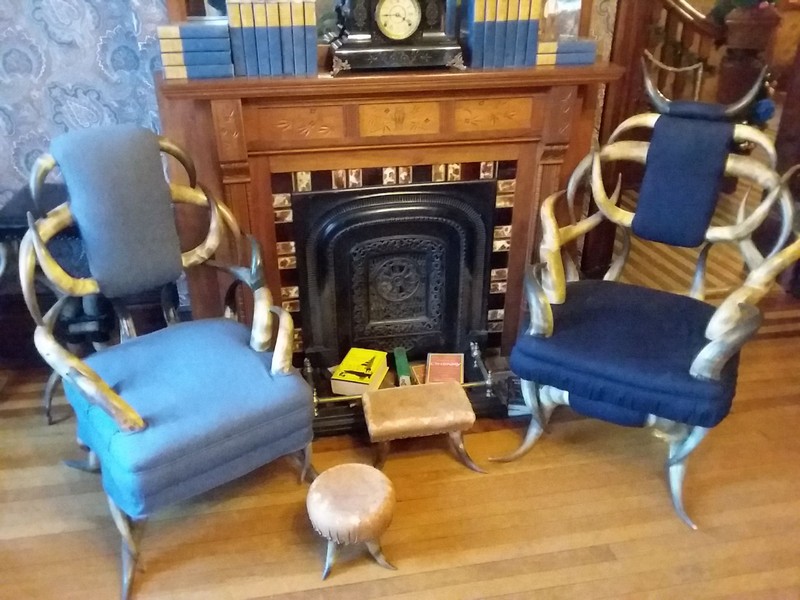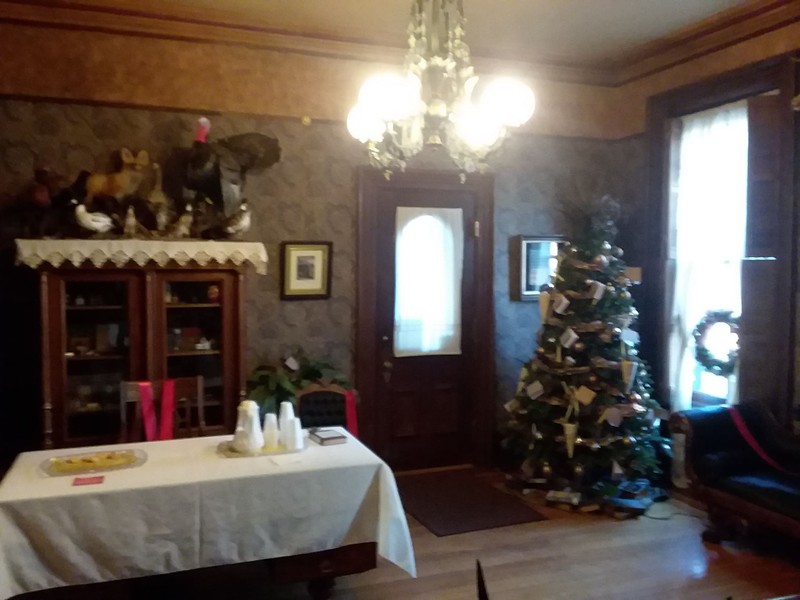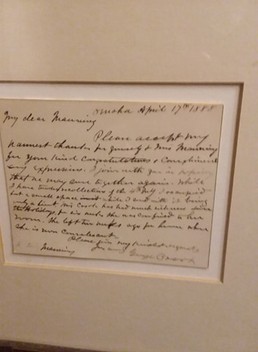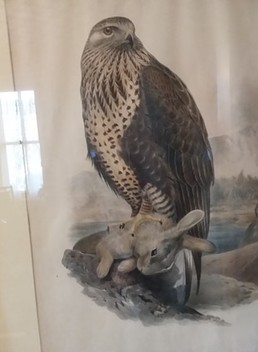General Crook House Museum
Introduction
Text-to-speech Audio
Images
Chairs with armrests made of horns.

The front of the house.




One of the upstairs bedrooms.

The General's study.

One of the two remining original fireplace mantles.

A sample of General George Crook's handwriting.

a painting of a hawk holding a rabbit.

Backstory and Context
Text-to-speech Audio
The General Crook house, at first built to be a military residence, was constructed in 1879 following the construction of Fort Omaha in 1868. It was the home of General George Crook and his wife Mary. General Crook served in the Indian Wars, and came to respect the tribes he was fighting against. He began advocating for Indian rights, and pressured the American government to respect treaties with Indians that it had signed. Gradually, the Indians also came to respect the General, who they saw as a man of honor.
One of the most notable instances of General Crook taking a stand on behalf of Indians was the trial of Chief Standing Bear. In 1877 the Ponca Indians were forced by the American government to move away from their lands into Indian territory. Nine of the Ponca Indians died on the journey, and 160 died shortly after they arrived. Chief Standing Bear's son's dying wish was to be buried on the land they had come from. In January 1879, a group of 30 members of the tribe led by Standing Bear left the reservation to carry out that wish. General Crook was ordered to arrest the Indians for leaving their reservation, but he contacted Thomas Tibbles, an influential editor. They rallied support for the Ponca Indians, which were being held in Fort Omaha. On April 30, 1879, the trial of Chief Standing Bear was held, and the judge ruled that the Indians were persons within the meaning of the law and being held illegally. They were released and Standing Bear buried his son's remains by the Niobrara river.
After General Crook's time, the house was occupied by several other commanders before eventually being converted to a mess hall and an officers' club. The house was one of the first buildings in the state to have a bath tub, and a centerpiece of American influence in the area. Multiple presidents, including Ulysses Grant, have visited it. The building is currently used by the Douglas County Historical Society as a museum and is recognized as a Nebraska State Historical Site. The exhibits focus on General Crook and Nebraskan history. In 1975, extensive restoration work began, including replacing much of the floor and filling the house with time period relevant furniture. A piano was shipped by steamboat up the Missouri river, and pianists are sometimes hired to play it during events. Assorted events such as parties, classes, and weddings are regularly held here.
Sources
Fort Omaha, Accessed November 23rd 2019. http://www.historicomaha.com/frtomaha.htm.
Mann, Becca. Inside Douglas County: History lives at General Crook House, Omaha World Herald. August 1st 2015. Accessed November 23rd 2019. https://www.omaha.com/special_sections/metro-guide/communities/inside-douglas-county-history-lives-at-general-crook-house/article_bf687a78-811c-5d8d-8e3c-cf2d86765141.html.
Visit Omaha. Accessed November 23rd 2019. https://www.visitomaha.com/listings/general-crook-house-museum/56918/.
Carey, David. "bone chairs." 2019. n.jpg.
Carey, David. "house front." 2019. n.jpg.
Carey, David. "sign out front." 2019. n.jpg.
Carey, David. "staircase." 2019. n.jpg.
Carey, David. "reception area." 2019. n.jpg.
Carey, David. "bedroom." 2019. n.jpg.
Carey, David. "study." 2019. n.jpg.
Carey, David. "mantle." 2019. n.jpg.
Carey, David. "handwriting." 2019. n.jpg.
Carey, David. "hawk." 2019. n.jpg.
